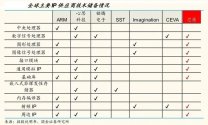Yup 2025 keep appearing as the date of near parity, as both the engine and semiconductor vulnerability will be addressed.The West has no viable alternative strategies other than conforming to a multipolar world. The current "Rules Based Order" is basically the end product of the previous colonial imperialist system that placed Anglo-Americans at the top followed by the West & Central Europeans below them. This system worked to their favor as long as they could maintain the commanding heights of the world economy, technology and military. They do this through patent laws, international financial parasitism, and pervasive Harvard MBA style comparative advantage trade agreements that straight-jacket new comers. The problem now is that China is the first country ever to be able to overcome all these obstacles. China is close to becoming a true full spectrum peer competitor in the near horizon. Even the Soviet Union was never a full spectrum peer competitor. China can and will take over the commanding heights if the status quo continues much longer. It is probably going to pass America in gross scientific output sometime between 2023-2025 and eventually probably surpass the entire OECD combined.
When you see how the CCP reacted when Trump launch the trade war it was as IF they are prepared and they were, I advised you look and research the 13th 5 year plan from 2016 to 2020 and the 01 and 02 Special project.Semiconductors are the gateway technology to the other lynchpin technologies of the commanding heights. Literally everything in the modern world you can think of. If the American sanctions successfully hold China back in this field, it would actually contain China for a long time. However, a long time isn't forever! Sooner or later, it would break through. The idiocy of this policy is that what should have been a long time is turning out to be a lot sooner than expected. This is like kicking yourself in the head and blaming the pain on the guy you were actually trying to kick.
Well first thing first welcome to the forum and I hope you enjoy your stay as I do especially on this thread where I learned a lot from our esteem members. To know the progress of domestic 14nm just watch what Huawei is doing and planning to do since they were heavily sanction by the US . IF the report is to be believed they will be launching HUAWEI P60 rumoured to pack 14nm 3D Kirin 9100 SoC, coming in 2023. We know Huawei invested a FAB in collaboration with ICRD and SMIC was prevented to supply them with Chips, so in all indication the domestic 14nm line is in operation and is producing the chip required for the eventual launching of the said phone thus the motto the Return of the King.Chinese officials have publicly announced the 14nm process being ready for commercialization but I haven't seen the same for 7nm. Even if 7nm is commercially viable by 2024, I think it would make more sense to be packaging 14nm 2.5/3D. Supposedly, they are working on improving yields but there are issues related to the photoresists, or possibly to the light sources. Nobody really knows because it's all rumors on the Chinese Internet.
And regarding 7nm please tune in what @olalavn @WTAN and @PopularScience post and it's in the realm of possibility after all TSMC first generation of 7nm was produce using ASML 1980i DUVL not the latest and it is claimed that SMEE SSA800 is of the same caliber of performance and spec.

